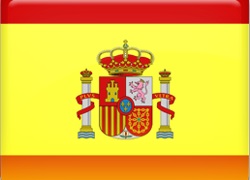Nine individuals were rescued from a boat navigating the treacherous Atlantic route, which reportedly departed from Senegal with 60 people aboard nine days ago.
At Least 50 Feared Drowned as Senegal Boat Sinks off Canary Islands


At least fifty individuals are feared to have drowned following an incident where a boat, navigating the hazardous Atlantic route from West Africa to Europe, started to sink approximately sixty miles south of the Canary Island of El Hierro.
Nine individuals were rescued from the vessel early on Monday following a timely alert from a passing bulk carrier, which notified Spain’s Salvamento Marítimo rescue service. This prompted the dispatch of a fast boat and a helicopter from its Tenerife base.
A spokesperson for Salvamento Marítimo stated, “The helicopter promptly arrived, retrieved nine individuals from the partially submerged boat, and transported them to El Hierro airport, where they received medical attention.”
“The rescue team confirmed that there were no other occupants on the vessel and returned to base.”
The spokesperson noted that the rescued individuals hailed from sub-Saharan Africa, further mentioning that Spain’s Guardia Civil police force informed Salvamento Marítimo that the boat had reportedly departed from the Senegalese city of Mbour with 60 people aboard nine days prior.
In October 2020, tragedy struck when 140 individuals, originating from the same port, perished after their boat sank off the Senegalese coast. The vessel caught fire and capsized near Saint-Louis on Senegal’s north-west coast, mere hours into the journey. Fortunately, fifty-nine people were rescued by nearby fishing vessels and the Senegalese and Spanish navies, while the bodies of 20 others were recovered.
This devastating event prompted the International Organization for Migration to advocate for collaborative efforts among governments to dismantle trafficking and smuggling networks exploiting vulnerable individuals. They also stressed the necessity of establishing enhanced legal channels to undermine the traffickers’ operations and prevent further loss of life.
Each year, tens of thousands of people fleeing conflict, poverty, and instability in sub-Saharan Africa attempt the perilous journey to Spain via the Atlantic route, resulting in numerous fatalities.
A recent report by the Caminando Fronteras migration NGO revealed alarming statistics, estimating that 6,618 individuals, including 384 children, lost their lives while attempting to reach Spanish shores in 2023 alone, averaging 18 deaths per day.
According to Spain’s interior ministry, between January 1st and April 15th of this year, 16,621 migrants arrived in Spain by boat, marking a significant increase of 11,681 compared to the same period last year. The majority of these arrivals, totaling 14,030, landed in the Canary Islands.
The dangers of this migration route were tragically emphasized two weeks ago when nine decomposed bodies were discovered aboard a boat floating off the coast of Brazil. Federal police reported that the deceased individuals were from Mauritania and Mali, and Brazilian authorities believe the boat drifted across the Atlantic to reach their waters. Similar grim discoveries have been made off the coasts of Tobago and the Turks and Caicos Islands in recent years.
This latest tragedy coincides with a two-day conference in Ghent, where EU interior ministers are convening to discuss the implementation of the much-anticipated European pact on migration and asylum. This pact was developed in response to Europe’s migration crisis in 2015, during which 1.3 million individuals, predominantly Syrian refugees, entered the EU.
Despite its intentions, the pact has faced criticism from over 160 human rights organizations, including Amnesty International, Human Rights Watch, and the International Rescue Committee. They argue that the deal will exacerbate suffering, reduce protection, and lead to more violations of human rights.

 বাংলা
বাংলা  Spanish
Spanish  Arabic
Arabic  French
French  Chinese
Chinese 
